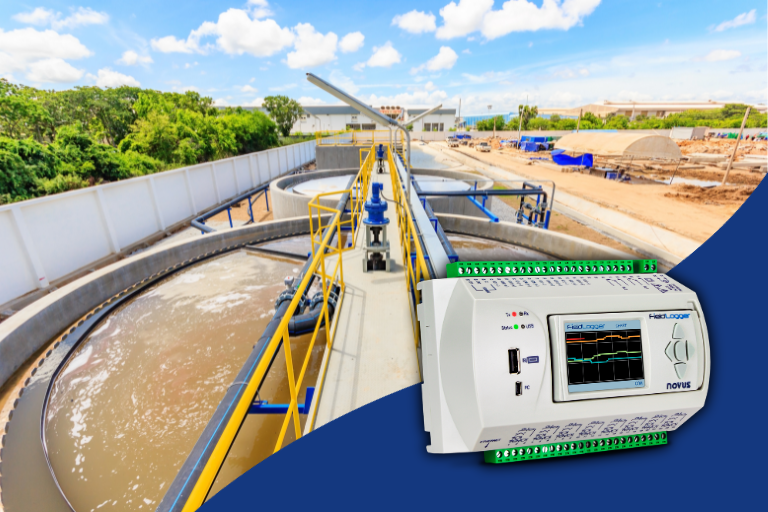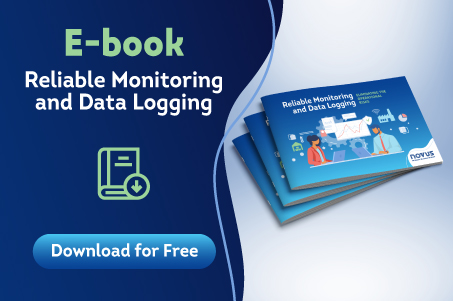In Chile, FieldLogger delivers accuracy in sanitation management
Implemented by Veset, a systems integrator that provides services to the General Department of Water in Chile, the NOVUS’ solution provides calculations with an exponent of up to six decimal places. This ensures greater accuracy during flow control with Parshall flumes. The calculation function implemented in FieldLogger means no manual calculations are required. It also reduces data management time and increases the reliability of records.
The function transforms FieldLogger into a specific device for recording data with greater accuracy and complements a system that integrates two other NOVUS’ devices (see below).
The General Department of Water, the ministry of Public Works in the country, is a body with a similar role to the Brazilian National Water and Sanitation Agency (ANA).
Optimizing flow measurement with Parshall flumes
The challenge of taking accurate and fast measurements in Parshall flume systems, which involves interactions of variables with decimal exponents, led NOVUS to update the data logger. This update has extended the possibilities of the data logger.
For Veset, it was necessary to maintain compliance with the standards of the General Department of Water of Chile, which requires strict control of the water used in the country. Large companies, including those in the mining and agricultural industries, as well as distribution utilities, often use Parshall flumes to deliver large volumes of water.
The decimal exponential calculation feature was perfect, as it helped solve one of the biggest bottlenecks in managing flow data. Incorporating this function into FieldLogger, applied with N1500-FT and N1500, has brought notable benefits. This update represents a breakthrough since traditional equipment does not offer this specific feature.
Overview of FieldLogger applications in flow control
Prior to the implementation of the decimal exponent calculation in FieldLogger, the General Department of Water of Chile had difficulties in reading the level signal (height) and relating, through standardized equations, a level flow through the Parshall flumes. The main challenge was to use more selective operations that would allow measurements that require the interaction of variables with decimal exponents.
The equations for associating the different channels have a decimal exponent as shown below.

The solution was temporarily solved with level transmitters that have internally integrated equations. When there were no transmitters with this feature, controllers or data loggers made the necessary mathematical connections. Generally, it is possible to use data loggers or controllers with the feature of associating diameter and height in relation to the Parshall flume to instantly relate the flow rate.
In Chile, the General Department of Water requires control of the water used in the territory. This should be done by recording the difference between the water that is extracted and that which is returned to the earth. Most large companies and industries, whether mining, forestry, or others, deliver large volumes of water through Parshall flumes.
Thus, the function built-in to the FieldLogger makes it the perfect device for recording data with the highest accuracy, complemented when using N1500-FT and N1500. Embracing this NOVUS’ solution has brought substantial results to the flow measurement process. Benefits such as improved accuracy, efficiency and agility are realized daily by managing resources in accordance with regulatory standards.
About Veset
Veset is a company with over 16 years’ experience, specialized in providing solutions in the areas of instrumentation, automation, and industrial control. The purpose of the organization is to act as a strategic ally for clients, supporting their development and the continuous improvement of their processes, and keeping them at the forefront of the changes that will arise in the future.
Read more:
FieldLogger was not NOVUS first data logger
Data logger: What is it, who uses it, and how to calibrate it
Data logging in sanitation: How to have greater control and avoid excessive losses

















